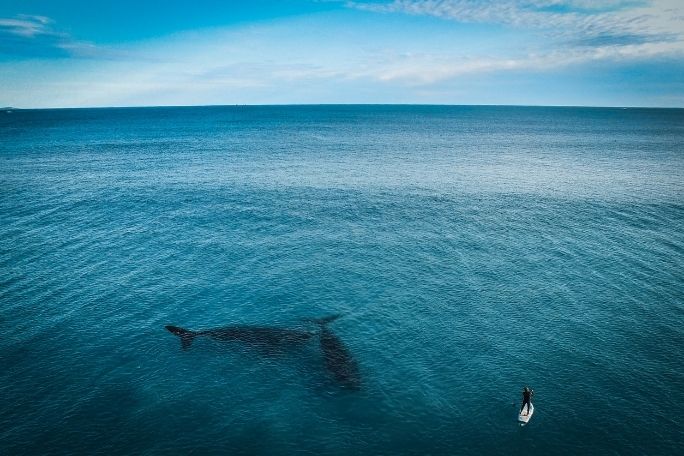Lesson summary
This lesson is designed to engage children with the wonders of the ocean, how we use it and how we experience it. Children are invited to make a little sea at their centre, and to think about what animals and objects might be found in their sea. This activity is designed to help connect children to the wonders of the natural world through sensory and play-based learning.
Activity intention:
- This activity is designed to help connect children to the wonders of the natural world through sensory and play-based learning.
Lesson guides and printables
Lesson details
Curriculum Mapping
Learning Outcome 2: Children are connected with and contribute to their world
- 2.3 Children become aware of fairness
Learning Outcome 4: Children are confident and involved learners
- 4.1 Children develop dispositions for learning such as curiosity, cooperation, confidence, creativity, commitment, enthusiasm, persistence, imagination and reflexivity
- 4.2 Children develop a range of skills and processes such as problem solving, inquiry, experimentation, hypothesising, researching and investigating
- 4.3 Children transfer and adapt what they have learned from one context to another
Learning Outcome 5: Children are effective communicators
- 5.1 Children interact verbally and non-verbally with others for a range of purposes
- 5.3 Children express ideas and make meaning using a range of media
Resources Required
Equipment needed:
- A half-full bucket, tub or tray of water to use as the sea. Alternatively, you could create your sea in a sandpit, using a plastic sheet to line a hole in the sand, and then filling this hole with water to create a little sea.
- A range of toy animals suitable to get wet. Your selection should include both sea animals (such as a fish, shark, seastar, seahorse, etc.) and land animals (such as cows, birds, reptiles, etc). You should have at least one sea animal for each child.
- A range of sea-related materials, such as sand, shells, seaweed and pebbles/rocks.
- A range of natural materials not normally found in the sea, such as sticks, leaves, bark, flowers and seeds and/or nuts.
- A variety of waste items, such as plastic lids, plastic bags, food wrappers, etc.
UN Sustainable Development Goals
- Target 14.1: By 2025, prevent and significantly reduce marine pollution of all kinds, in particular from land-based activities, including marine debris and nutrient pollution.
Additional Info
Blue is a feature documentary film charting the drastic decline in the health of our oceans. With more than half of all marine life lost and the expansion of the industrialization of the seas, the film sets out the challenges we are facing and the opportunities for positive change. Blue changes the way we think about our liquid world and inspires the audience to action. Find out how to screen or download the film here. Along with the film is an ambitious global campaign to create advocacy and behaviour change through the #oceanguardian movement. To become an ocean guardian, see the website.


Welcome back!
Don't have an account yet?
Log in with:
Create your free Cool.org account.
Many of our resources are free, with an option to upgrade to Cool+ for premium content.
Already have an account?
Sign up with:
By signing up you accept Cool.org's Terms and Conditions(Opens in new tab) and Privacy Policy(Opens in new tab).